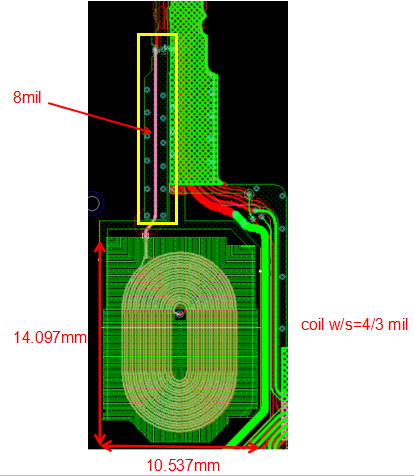Other Parts Discussed in Thread: FDC1004
Hi:
Since when we don't touch the metal but when our MCU at DC-DC mode(it's switching frequency is 8MHz), because it has radiation, the LDC2112 raw data is unstable (when MCU at LDO mode, the raw data can stable at -4~+4, but when at DC-DC mode, the raw data not stable and can be high as -1xx~+3xx), so I have some questions as below~~
1. We use LDC tool run FEMM with below parameters and get sensor frequency with target is 12.32MHz, but we use oscilloscope probe to measure IN0 cap and the frequency is ~8Mhz, we check our real coil trace width/gap and distance with metal, all are match our design value, so do you know why there is huge different between design and actual value? And is it mean the other calculated parameters like Rp and Q it's value also will not the same with design?
2. Since we have second source FPC vendor KHT(our coil is on FPC), and with them the raw data is stable, but when we change IN0 cap to another value, second source's value become unstable as below table, so I want ask what is the principle of LDC2112? Because the MCU DC-DC switching frequency is 8MHz, so if we tuning LDC2112 resonant frequency far away from 8MHz, the unstable situation should disappear? Or no matter how we tuning resonant frequency, if 8MHz radiation exist, the LDC2112 raw data must be unstable?
3. If we tune Ccom value(by above, if we tuning Ccom value within 0.3~3.2nf), will it improve this unstable situation? What parameter will be effect when modify Ccom?
Thank you~~
Poki






